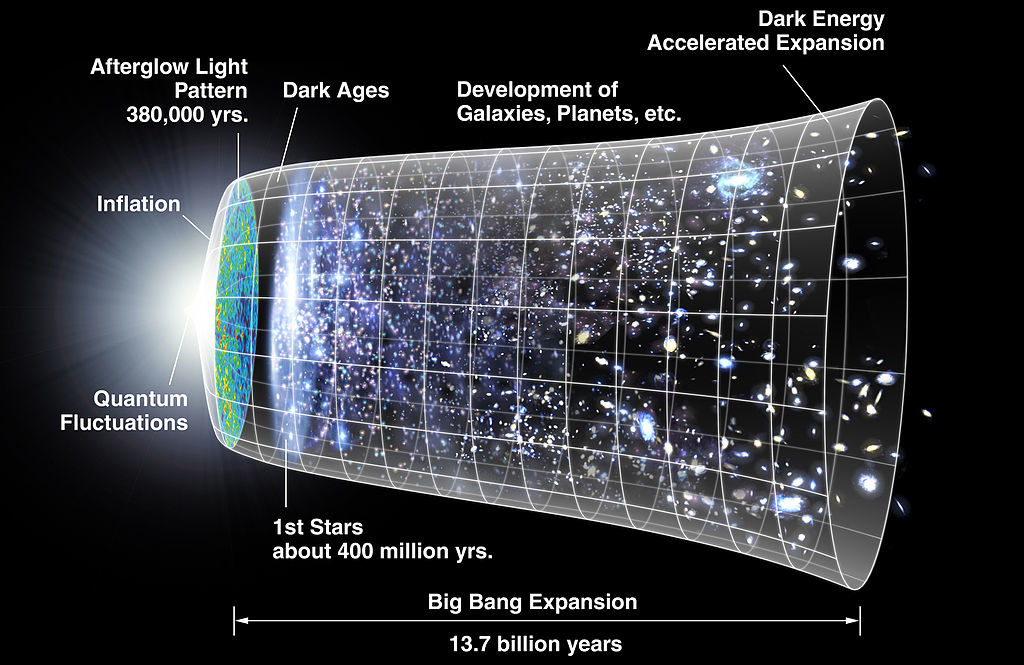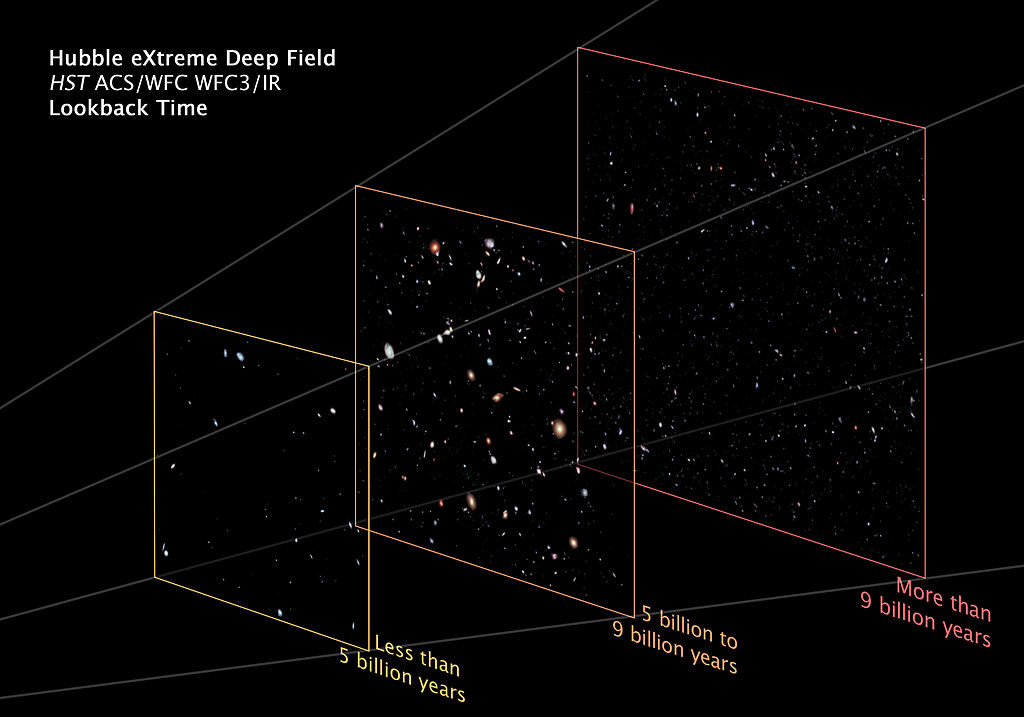The Big Bang Theory
The Big Bang theory is the most
widely accepted cosmological explanation of how the universe formed. If we
start at the present and go back into the past, the universe is contracting,
getting smaller and smaller. What is the end result of a contracting universe?
According to the Big Bang theory, the universe began about 13.7 billion years
ago. Everything that is now in the universe was squeezed into a very small
volume. Imagine all of the known universe in a single, hot, chaotic mass. An
enormous explosion—a big bang—caused the universe to start expanding rapidly.
All the matter and energy in the universe, and even space itself, came out of
this explosion. What came before the Big Bang? There is no way for scientists
to know since there is no remaining evidence.

After the Big Bang
In the first few moments after the Big Bang, the universe was
unimaginably hot and dense. As the universe expanded, it became less dense and
began to cool. After only a few seconds, protons, neutrons, and electrons could
form. After a few minutes, those subatomic particles came together to create
hydrogen. Energy in the universe was great enough to initiate nuclear fusion
and hydrogen nuclei were fused into helium nuclei. The first neutral atoms that
included electrons did not form until about 380,000 years later.The matter in
the early universe was not smoothly distributed across space. Dense clumps of
matter held close together by gravity were spread around. Eventually, these
clumps formed countless trillions of stars, billions of galaxies, and other
structures that now form most of the visible mass of the universe. If you look
at an image of galaxies at the far edge of what we can see, you are looking at
great distances. But you are also looking across a different type of distance.
What do those far away galaxies represent? Because it takes so long for light
from so far away to reach us, you are also looking back in time.

Dark
Matter and Dark Energy
The Big Bang theory is
still the best scientific model we have for explaining the formation of the
universe and many lines of evidence support it. However, recent discoveries
continue to shake up our understanding of the universe. Astronomers and other scientists
are now wrestling with some unanswered questions about what the universe is
made of and why it is expanding. A lot of what cosmologists do is create
mathematical models and computer simulations to account for these unknown
phenomena, such as dark
energy and dark matter.
Dark Matter
The things we observe in
space are objects that emit some type of electromagnetic radiation. However,
scientists think that matter that emits light makes up only a small part of the
matter in the universe. The rest of the matter, about 80 percent, is dark
matter. Dark matter emits no electromagnetic radiation so we can’t observe it
directly. However, astronomers know that dark matter exists because its gravity
affects the motion of objects around it. When astronomers measure how spiral
galaxies rotate, they find that the outside edges of a galaxy rotate at the
same speed as parts closer to the center. This can only be explained if there
is a lot more matter in the galaxy than they can see.Gravitational lensing
occurs when light is bent from a very distant bright source around a
super-massive object. To explain strong gravitational lensing, more matter than
is observed must be present. With so little to go on, astronomers don’t really
know much about the nature of dark matter. One possibility is that it could
just be ordinary matter that does not emit radiation in objects such as black
holes, neutron stars, and brown dwarfs, objects larger than Jupiter but smaller
than the smallest stars. But astronomers cannot find enough of these types of
objects, which they have named MACHOS (massive astrophysical compact halo
object), to account for all the dark matter, so they are thought to be only a
small part of the total.Another possibility is that the dark matter is thought
to be much different from the ordinary matter we see. Some appear to be
particles that have gravity, but don’t otherwise appear to interact with other
particles. Scientists call these theoretical particles WIMPs, which stands for
Weakly Interactive Massive Particles.
Most scientists who study
dark matter think that the dark matter in the universe is a combination of
MACHOS and some type of exotic matter such as WIMPs. Researching dark matter is
an active area of scientific research, and astronomers’ knowledge about dark
matter is changing rapidly.
Dark Energy
Astronomers who study the
expansion of the universe are interested in knowing the rate of that expansion.
Is the rate fast enough to overcome the attractive pull of gravity?
· If yes, then the universe will expand
forever, although the expansion will slow down over time.
· If no, then the universe would
someday start to contract, and eventually get squeezed together in a big
crunch, the opposite of the Big Bang.
Recently astronomers have
made a discovery that answers that question: the rate at which the universe is
expanding is actually increasing. In other words, the universe is expanding faster now than
ever before, and in the future it will expand even faster. So now astronomers
think that the universe will keep expanding forever. But it also proposes a
perplexing new question: What is causing the expansion of the universe to
accelerate? One possible hypothesis involves a new, hypothetical form of energy
called dark energy. Some scientists think that dark energy
makes up as much as 72 percent of the total energy content of the universe.


wepaaaa hahaha
ReplyDeletethanks for the infos!
ReplyDeletekinda confuse about this before, thanks for this!
ReplyDeletenicee!
ReplyDeletethanks sa info teh
ReplyDeletegaling
ReplyDeletethankuu
ReplyDeletehmmm
ReplyDeletenicee/
ReplyDeleteuniversee <3
ReplyDeleteNicee article
ReplyDeletethankyouu
ReplyDelete🐁🐁
DeleteNays
ReplyDeleteGaling
ReplyDeleteHahaja
ReplyDeleteKalupet
ReplyDeleteNays info
ReplyDeleteWoahhhh :O
ReplyDeleteOooooh
ReplyDeletenicee info!
ReplyDeleteNicee
ReplyDeleteGreaat article
ReplyDeletethanks for this
ReplyDelete